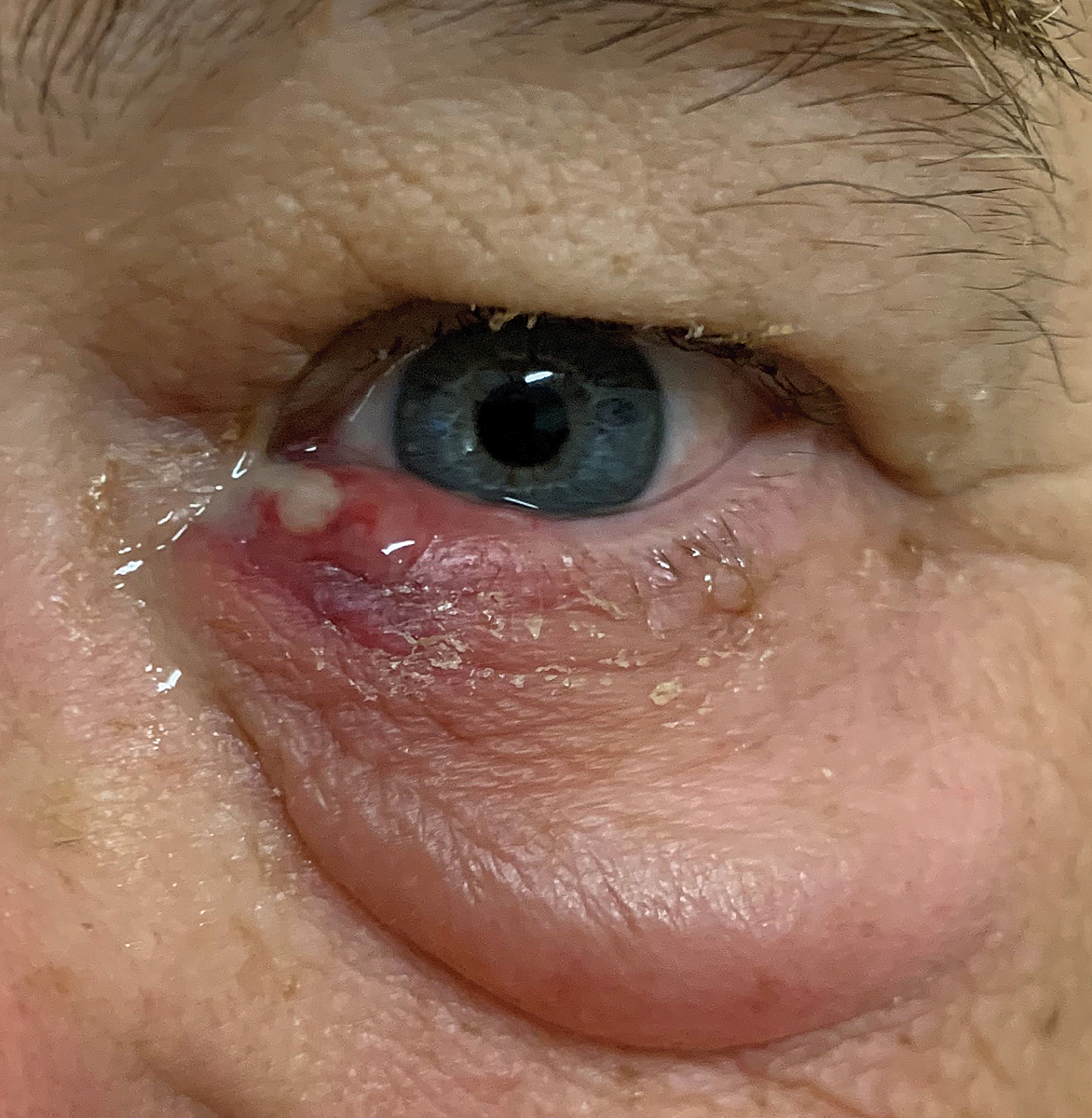 |
|
The most common clinical features observed in patients with acute dacryocystitis in this single-center study were pain (74%), swelling (70%) and epiphora (56%). Photo: Joseph W. Sowka, OD. Click image to enlarge. |
The most common disease of the lacrimal drainage system is acute bacterial dacryocystitis, caused by bacterial overgrowth in the stagnant fluid of the lacrimal sac. A new study conducted in South Australia investigated the conditions’ microbiology with the goal of providing a comprehensive profile of the disease to help develop evidence-based clinical guidelines for optometrists and ophthalmologists. They were able to identify the specific microorganisms involved in bacterial dacryocystitis and their antibiotic susceptibility.
The researchers reviewed the records of 43 patients (65% female; mean age, 64 years) who presented with acute dacryocystitis at a hospital in Australia between 2018 and 2023. The collected data encompassed demographic information, clinical presentation, microbiological analysis, management and outcomes.
The two most common clinical features observed were pain (74%) and swelling (70%). Organisms were found in nearly half of the patients (49%), the most common being Staphylococcus aureus (42%) followed by Streptococcus species (19%), Escherichia coli (8%), Aggregatibacter species (8%), Morganella morganii (4%), Enterobacter cloaceae (4%), Hafnia alvei (4%), mixed anaerobes (4%), E coliforms (4%) and Pseudomonas aeruginosa (4%).
Keeping in mind that these patients were seen at a single center, the antibiotics most frequently prescribed were amoxicillin-clavulanic acid (50%), flucloxacillin (33%) and cefalexin (18%). In acute bacterial dacryocystitis caused by Staphylococcus aureus or Streptococcus species, the researchers found that these bacteria were sensitive to antibiotics like vancomycin, clindamycin, trimethoprim/sulfamethoxazole (TMP/SXT) and cefalexin. Vancomycin showed a sensitivity rate of 100% against both bacteria, while clindamycin and TMP/SXT also showed a sensitivity rate of 100% against Staphylococcus aureus.
However, in cases of methicillin-resistant Staphylococcus aureus (MRSA) infection, the researchers indicate that stronger treatment like intravenous vancomycin and surgery may be necessary due to the bacteria’s resistance to multiple antibiotics.
“In this retrospective study, two patients had MRSA, representing 18% of Staphylococcus aureus infections causing dacryocystitis,” they wrote in their paper on the study, published in International Ophthalmology. “MRSA [is] significantly associated with acute dacryocystitis as opposed to chronic presentations,” they pointed out, adding that “dacryocystitis secondary to MRSA can be challenging to manage as it is more likely to be refractory to conservative treatment, and a definitive dacryocystorhinostomy is often required for resolution.” Both patients with MRSA in this study were successfully treated with no further recurrences documented; one achieved resolution of the infection with oral clindamycin, while the other required hospital admission, received intravenous vancomycin and underwent a dacryocystorhinostomy within one week of admission.
These results show that “the microbiological trends of acute dacryocystitis have largely remained consistent, with a predominance of Gram-positive organisms,” the researchers concluded in their paper. “This study can be used in conjunction with other future epidemiological and microbiological analyses to inform guidelines and choice of empirical antibiotics.”
Gowda A, Tong JY Selva D. Microbiology of acute bacterial dacryocystitis: a tertiary institutional experience in South Australia. Int Ophthalmol. 2024;44:282. |


